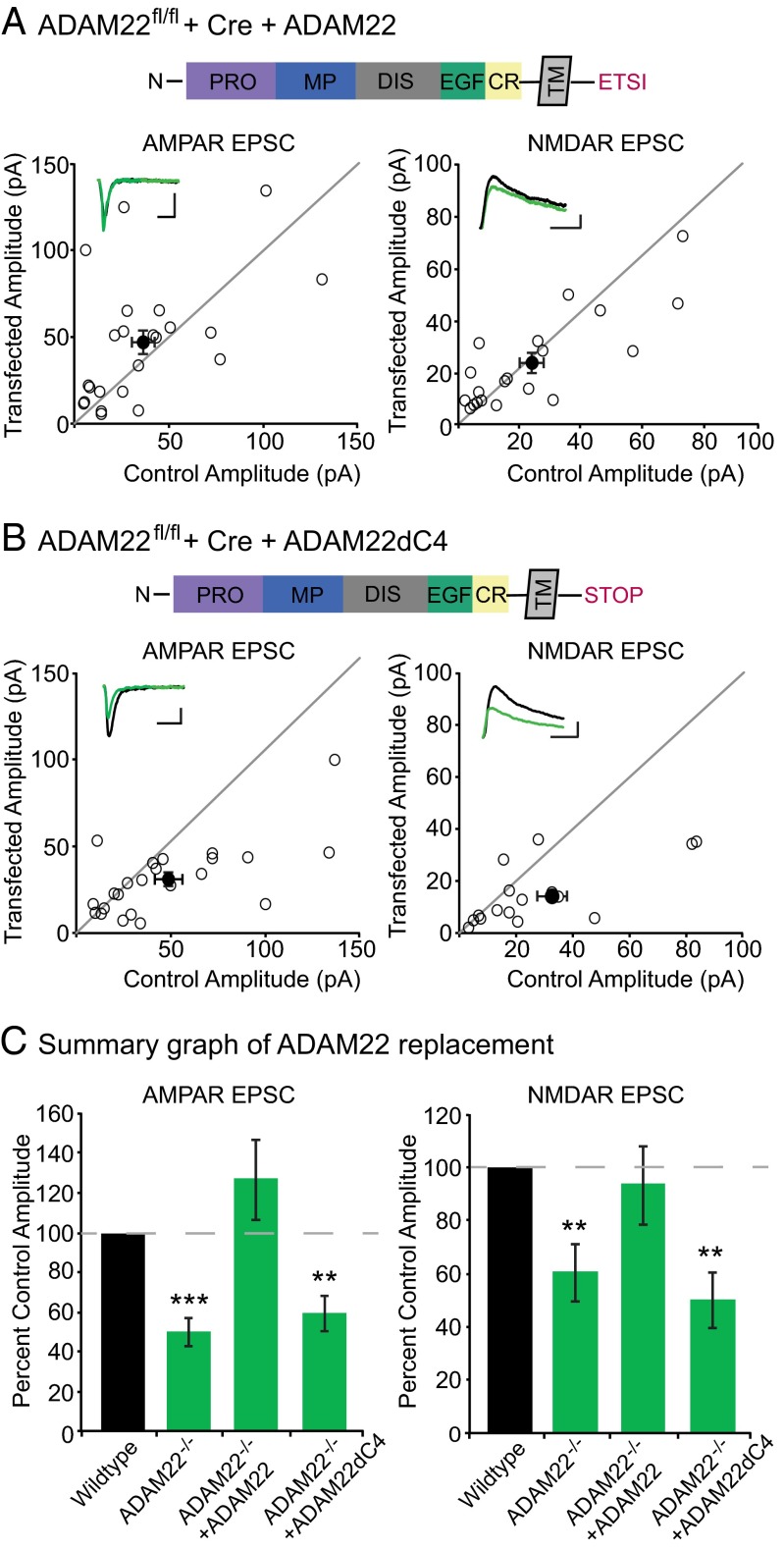Fig. 4.
ADAM22 lacking the PDZ-binding motif is unable to rescue synaptic transmission. (A) ADAM22 expression fully rescues the decrease in AMPAR- and NMDAR-mediated transmission observed in ADAM22−/− cells. Above, diagram of N-terminal protein domains, transmembrane domain (TM), and C-terminal PDZ-binding motif in wild-type ADAM22. Scatterplots show individual dual recordings (open circles) and mean ± SEM (filled circle). (Insets) Representative traces from a dual recording of a wild-type (black) and ADAM22−/− cell (green). (Scale bars, 50 ms and 25 pA.) (B) Expression of ADAM22 lacking the C-terminal PDZ-binding domain (ADAM22dC4, diagram above) is unable to rescue the AMPAR or NMDAR EPSC deficit in ADAM22−/− cells. (Scale bars, 50 ms and 25 pA.) (C) Summary bar graphs showing normalized mean ± SEM AMPAR and NMDAR EPSCs in wild type, Cre-, Cre + ADAM22-, and Cre + ADAM22dC4-expressing cells. Whereas wild-type ADAM22 is able to rescue both AMPAR- (P = 0.17, n = 23) and NDMAR-mediated EPSCs (P = 0.87, n = 20) to wild-type levels, expression of ADAM22dC4 fails to rescue AMPAR- (P = 0.006, n = 23) and NMDAR-mediated transmission (P = 0.009, n = 16).

